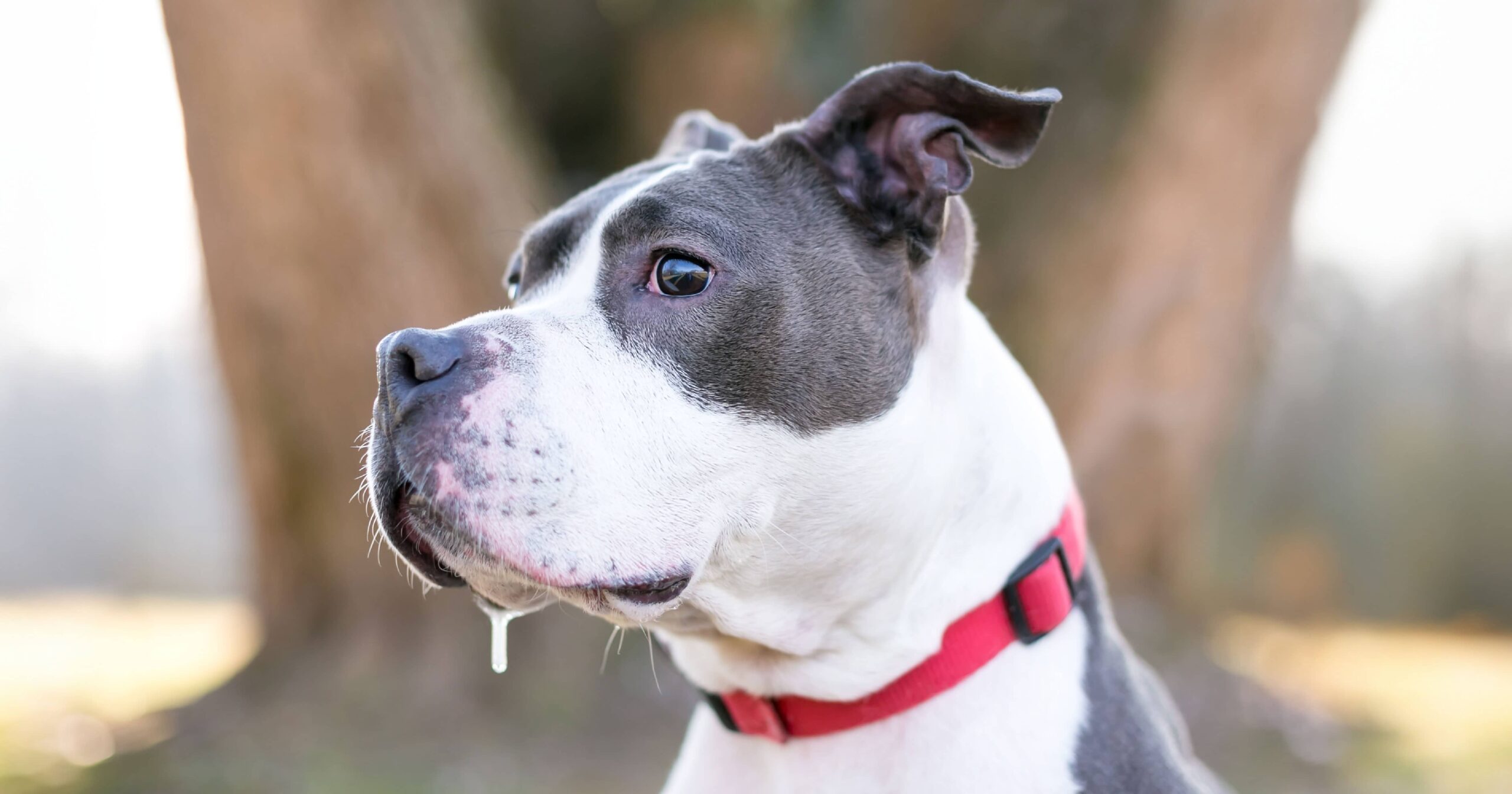
You’ve probably seen those slow-motion videos where a dog shakes their head and wads of drool fly off everywhere. They’re funny to watch, but not so funny when you’re on the receiving end!
For some dogs, a never-ending string of drool dripping from their mouth is just part of who they are. But for others, it can be a sign of a medical condition and possibly one that’s life-threatening.
What Is Drool?
Drool is just saliva dripping out of a dog’s mouth. Saliva helps moisten and lubricate food so that dogs can swallow it easily. Unlike human saliva, canine saliva doesn’t contain an enzyme (amylase) that begins to break down carbohydrates in food into sugars. And despite the myth, a dog’s mouth is not cleaner than ours.
All dogs drool sometimes, especially when they’re about to eat something scrumptious (like pet food from Diamond!) or they smell a scintillating scent. If you’ve been eating a delicious meal in front of your dog, you’ve probably noticed a puddle of drool next to you — or on you!
Drooling Is in Some Dogs’ DNA
There are some dog breeds that are famous for their drool strings. If you own a Newfoundland, Saint Bernard, mastiff, bulldog or any breed of hound, you’re probably an expert at wiping up drool. These breeds (and some others) typically have loose skin around their mouths where saliva collects and then drips out. Pet parents of these dogs may keep a “drool rag” handy to wipe their dog’s mouth and stop the drool from covering their floor, furniture, walls and every other surface of their house. A bandana or bib around your dog’s neck can also be useful to catch drool drips.
Drooling Can Be a Sign of Illness
If your dog doesn’t usually drool, or if the amount they’re drooling has increased, it could be a sign that something’s up. Sometimes it’s a behavioral issue, like when they’re nervous or anxious about something (e.g., when you “veterinarian”). However, there are also medical conditions that can cause excess saliva production (hypersalivation), ranging from something mild, like an upset tummy, to a life-threatening condition like toxin ingestion. Here are some medical conditions that can cause dogs to drool.
- Nausea: A dog that feels nauseous can have increased saliva production. This is usually a symptom of another medical condition.
- Tummy Troubles: A case of garbage gut, gastrointestinal system upset and even motion sickness from a ride in the car can all cause drooling.
- Mouth Issues: Periodontal (gum) disease, tartar buildup, a sore tooth, ulcers or something stuck in your dog’s mouth (a foreign body like a stick) can cause saliva production to increase. If you see a foreign body lodged in your dog’s mouth, immediately contact your veterinarian. Your dog should also have a checkup if you notice any other mouth issues.
- Viral and Bacterial Infections: Some infections can cause dogs to drool. You’re probably well aware of one of them — rabies. A scary thought, but it’s also not likely to be the reason for your dog’s drool if their rabies vaccination is up-to-date.
- Toxins: If dogs are poisoned, it can cause them to drool excessively. This could be caused by exposure to poisonous plants, household chemicals, rodenticides, some human foods and toxins produced by animals. For example, when dogs eat, bite or pick toads up with their mouth, toxins secreted by the toad can poison your dog.
If there is a possibility that your pet has consumed, inhaled, licked or otherwise been exposed to something toxic, immediately call your veterinarian, an after-hours emergency clinic, or one of the two animal poison control centers in North America:
- Heatstroke: If your dog’s core temperature rises above 105 °F or higher, they can get heatstroke. This is a medical emergency, so if you suspect your dog is suffering from heatstroke, seek veterinary care immediately. If your dog is obese or a brachycephalic (flat-nosed) breed, they have an increased risk of heatstroke.
- Pancreatitis: Garbage gut or eating a lot of rich, fatty food can cause pancreatitis in dogs — an inflammation of the pancreas. In severe cases it can require hospitalization, so don’t give in to those puppy-dog eyes begging you for fat trimmings.
- Gastric Dilatation-Volvulus (GDV): This condition occurs when the stomach becomes gas-filled, distended and twisted on itself, resulting in an obstruction. Deep-chested breeds are more likely to experience GDV, but other factors can also increase a dog’s risk of GDV.
- Skunk spray: Skunks often spray dogs near their faces. Along with drooling, the spray can cause irritation to your dog’s nose, mouth and eyes — sometimes even temporary blindness. If your dog does get sprayed by a skunk, here are some tips for “de-skunking” them — and it’s not tomato juice.
When to Call the Veterinarian About Your Drooling Dog
If your dog doesn’t usually drool but is now drooling all the time, or the amount of drool they’re producing has greatly increased, contact your veterinarian. You should also look for other signs of illness, including vomiting, diarrhea, changes to their eating and drinking habits, behavioral changes or any other signs that aren’t normal for your dog. Identifying those symptoms can help your veterinarian make a diagnosis and find a reason for your dog’s increased drooling.
All dogs drool. So even if you don’t have one of the breeds we listed above, at some point you’re going to see some drool. Remember that if your dog suddenly starts producing a lot of saliva, make sure you contact your veterinarian. That way they can rule out a medical reason for the change.
RELATED POST: Untraining Your Pet: Stopping Your Dog from Begging
